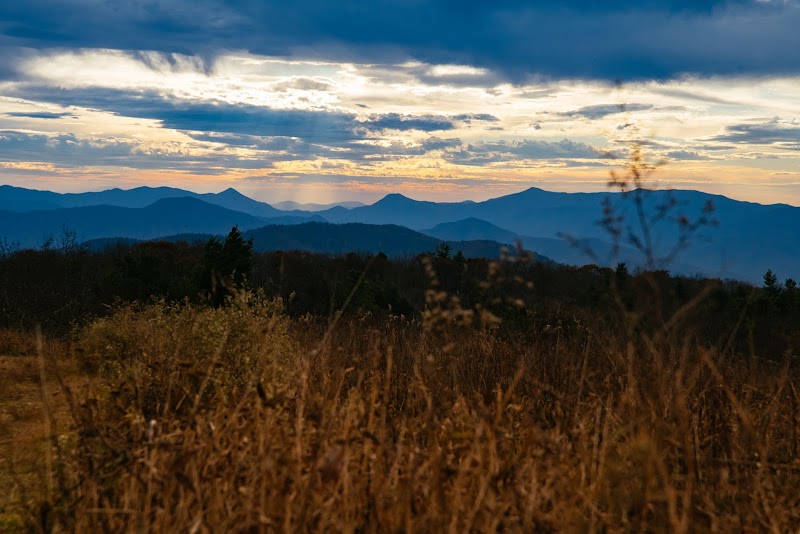Chasing Cascades: Best Waterfall Hikes Near Johnson City in the Appalachians
Explore some of the best waterfall hikes and hidden cascades just outside Johnson City in the Appalachian Mountains. This guide highlights accessible yet rewarding trails that blend natural beauty with practical tips for hikers of all levels.
Stay Hydrated and Pack Water
The cascades and streams are refreshing to see but not safe to drink from. Bring enough water for the duration of your hike to stay energized and alert.
Wear Appropriate Footwear
Traction-focused hiking shoes or boots are critical for rocky, wet, and sometimes slippery terrain near waterfalls.
Start Early to Avoid Crowds and Afternoon Weather
Early morning hikes offer cooler temperatures, better lighting for photography, and fewer people on the trails.
Use Trekking Poles for Stability
Poles help on slippery sections near cascades and assist with steep climbs or descents, reducing fatigue.
Chasing Cascades: Best Waterfall Hikes Near Johnson City in the Appalachians
Johnson City, tucked in the Appalachian Mountains, offers a compelling playground of cascading waters and rugged trails for hikers who crave adventure balanced with nature’s raw simplicity. These waterfall hikes and hidden cascades provide a direct line to the pulse of the region — rivers daring you forward, the forest whispering underfoot, and cliffs standing fiercely themselves, each step measured but rewarding.
Start with Buffalo Mountain Park, just a 20-minute drive from downtown Johnson City. The 3.5-mile loop trail covers moderate terrain with about 800 feet of elevation gain. The path is a blend of packed dirt and rocky stretches winding through mixed hardwoods. The highlight is a steep-sided cascade hidden behind thick rhododendron. The falls spill with a persistent roar, the cool mist brushing your face as the forest exhalations settle around you. To reach this, sturdy footwear is a must; the final approach includes short scramble sections).
Just a short drive south, Roan Mountain State Park offers a longer, more challenging hike to Carson Falls. This 7-mile round trip combines steep climbs and switchbacks, with nearly 1,200 feet of elevation gain, pushing hikers’ endurance but rewarding them with a powerful 60-foot waterfall visible through openings in the dense spruce-fir forest. The trail surface here moves from leaf-covered dirt to granite slabs, demanding sure footing, especially after rain.
For those seeking quieter moments of discovery, the Little Brier Branch Falls trail offers a 2.4-mile out-and-back with gentle elevation. The terrain is friendly for casual hikers but keeps the force of the brook alive underneath, tumbling over boulders and disappearing in patches of moss and ferns. Early morning light cutting through the canopy here gives the falls a quiet glow, and the solitude invites reflection without distractions.
Preparation tips: hydration is non-negotiable—rivers and cascades may refresh views but offer no potable water. Footwear should be durable, traction-focused, and broken in on mixed terrain. Early spring and fall offer the most comfortable hiking temperatures, but be ready for sudden weather changes in the Appalachians; layers work best.
Hiking these cascades is not about conquering but engaging with a landscape that’s fiercely itself, demanding respect through preparation and attentiveness. Each waterfall offers a conversation with water and stone, pushing you not just forward but deeper into the Appalachian wilderness that shapes Johnson City’s outdoor spirit.
Nearby Trips
All Adventures
Boat Charters
Water Activities
Adventures near Johnson City
Discover the unique and memorable adventures that make Johnson City special.
Frequently Asked Questions
What is the best time of day to visit these waterfalls?
Early mornings offer calm, fewer crowds, and soft light that brings out the textures of the cascades. Late afternoon can also offer dramatic shadows but prepare for more hikers, especially on weekends.
Are these trails suitable for families with children?
Many trails near Johnson City, like Little Brier Branch Falls, are manageable for families with older children who can handle uneven terrain. Always supervise near water and assess each child's confidence on slippery rocks.
Can I swim at any of these waterfalls?
Swimming is generally not recommended due to strong currents, cold water temperatures, and rocky pools. Instead, enjoy the mist and sound of the falls from safe vantage points.
Are dogs allowed on these hikes?
Most trails allow dogs but require them to be on a leash to protect local wildlife and maintain trail safety.
What wildlife might I encounter on these routes?
Expect to see white-tailed deer, various songbirds, and the occasional black bear. Keep food sealed and stay alert, especially in more remote areas.
Is there cell phone reception along the trails?
Reception is spotty to non-existent in many parts of the Appalachian forest near Johnson City. It's best to hike prepared for limited connectivity and bring a map or GPS device.
Recommended Gear
Hiking boots with traction
Provide stability and grip on wet, rocky trails near waterfalls.
Layered clothing
Allows adaptation to changing temperatures and sudden weather shifts in the mountains.
Trekking poles
Enhance balance and reduce strain on uneven or slippery sections.
Water filter or purifier
Optional for extended trips but useful if you need to refill from water sources safely.
Local Insights
Hidden Gems
- "A seldom-visited overlook at Buffalo Mountain provides sweeping views of the Doe River valley, perfect for a break mid-hike."
- "A rocky outcrop near Roan Mountain’s Carson Falls trail reveals fossilized coral embedded in the stone, a small window into ancient seas."
Wildlife
- "Keep an eye out for the elusive Indiana bat during dusk hours and listen for the distinctive call of the barred owl at night."
History
"These mountains have long held significance for Cherokee communities and early settlers. Some trails follow routes used for logging in the early 20th century."
